The Gloucester Service is an early fruit of the wonderful and rather extraordinary outpouring of music for the Anglican cathedral tradition with which Howells revived his flagging career as a composer after the Second World War. Over three decades Howells composed some twenty settings of the evensong canticles. The set for Gloucester Cathedral was one of the first, written as his mother lay dying in his home town of Lydney in 1946. His diary entry for 6 January reads: ‘A lovely day with Mother. F# Magn. and N. Dim. finished while talking to her.’ She died three weeks later. Although the dedication is to Gloucester Cathedral, it was not composed to fulfil a commission, but in the wake of the success of the
Collegium Regale set, written for King’s College, Cambridge in 1945. In 1950, Eric Milner-White, the visionary former dean of King’s who had encouraged Howells to compose for the church, wrote of having heard the Gloucester canticles twice in ten days at York Minster: ‘The Nunc Dimittis left me in inward tears for the rest of the day; it is true to say that no piece of music has ever moved me in the same way or so much. At that first hearing, the Magnificat interested rather than moved me—though the Gloria I think tuned my spirit for the Nunc Dimittis. On the second hearing the Magnificat produced the same effect upon me as the N[unc] D[imittis] at the first; and the N. D. even increased its power. We, not I only, found it overwhelming. […] I personally feel that you have opened a new chapter in church music. [It is] of spiritual moment rather than liturgical. It is so much more than music making; it is experiencing deep things in the only medium that can do it.’
from notes by Paul Andrews © 2012
Le
Gloucester Service est un fruit précoce du merveilleux et assez extraordinaire débordement de musique pour la cathédrale anglicane et sa tradition qui a permis à Howells de relancer sa carrière chancelante de compositeur après la Seconde Guerre mondiale. En l’espace d’une trentaine d’années, Howells a écrit la musique d’une vingtaine de cantiques pour l’office du soir. Le recueil pour la Cathédrale de Gloucester a été l’un des premiers, composé alors que sa mère se mourrait dans sa ville natale de Lydney, en 1946. Dans son journal, au 6 janvier, il a écrit: «Une belle journée avec Maman. Magn. en fa dièse et N. Dim. achevés pendant que je lui parlais.» Elle est morte trois semaines plus tard. Bien que le recueil soit dédié à la Cathédrale de Gloucester, il ne résulte pas d’une commande, mais a vu le jour dans le sillage du succès du recueil
Collegium Regale, écrit pour le King’s College de Cambridge, en 1945. En 1950, Eric Milner-White, ancien doyen visionnaire de King’s College qui avait encouragé Howells à composer pour l’église, a écrit avoir entendu les cantiques de Gloucester deux fois en dix jours à la cathédrale d’York: «Le Nunc Dimittis m’a fait pleurer en mon for intérieur pendant le reste de la journée; je dois reconnaître qu’aucun morceau de musique ne m’a jamais ému de la même manière ou à ce point. À la première écoute, le Magnificat m’a plus intéressé qu’ému—mais je pense que le Gloria a préparé mon esprit pour le Nunc Dimittis. À la seconde écoute, le Magnificat a eu le même effet sur moi que le N[unc] D[imittis] à la première écoute; et le N. D. a encore accentué son pouvoir. Nous, et pas seulement moi, l’avons trouvé irrésistible. […] Personnellement, j’ai l’impression que vous avez ouvert un nouveau chapitre dans la musique religieuse. [Il est] d’une grande importance spirituelle, plutôt que liturgique. C’est tellement plus que faire de la musique; c’est éprouver des choses profondes dans le seul moyen d’expression qui peut le permettre.»
extrait des notes rédigées par Paul Andrews © 2012
Français: Marie-Stella Pâris
Der
Gloucester Service ist ein frühes Beispiel des herrlichen und ziemlich außergewöhnlichen Schaffensschubs von Werken, die Howells für die anglikanische Kathedralentradition schrieb. Diese Werke verliehen seiner strauchelnden Karriere als Komponist nach dem Zweiten Weltkrieg neuen Schwung. Über drei Jahrzehnte sind rund zwanzig Vertonungen der beiden Lobgesänge für die Abendandacht entstanden. Das Satzpaar für die Kathedrale von Gloucester—eines der ersten—komponierte er 1946, als seine Mutter in seiner Heimat Lydney im Sterben lag. Am 6. Januar schrieb er in sein Tagebuch: „Ein schöner Tag mit Mutter. Magn. und N. Dim. in Fis abgeschlossen, während ich mit ihr sprach.“ Drei Wochen später starb sie. Obwohl das Werk der Kathedrale von Gloucester gewidmet ist, entstand es nicht als Auftragskomposition, sondern im Anschluss an den Erfolg des mit
Collegium Regale betitelten Satzpaars, das Howells 1945 für das King’s College in Cambridge geschrieben hatte. Eric Milner-White, ein früherer Dekan von King’s, der Howells in weiser Voraussicht zur Komposition von Kirchenmusik ermuntert hatte, schrieb 1950, nachdem er die Gloucester-Gesänge zweimal innerhalb von zehn Tagen am Münster von York gehört hatte: „Nach dem Nunc Dimittis musste ich den Rest des Tages innerlich Tränen vergießen; ich kann ehrlich sagen, dass mich kein anderes Musikstück jemals auf ähnliche Weise oder in gleichem Maße angerührt hat. Bei diesem ersten Hören fand ich das Magnificat eher interessant als anrührend—obwohl das Gloria mich geistig wohl auf das Nunc Dimittis einstimmte. Beim zweiten Hören machte das Magnificat den gleichen Eindruck auf mich wie das N[unc] D[imittis] beim ersten Mal; und das N. D. gewann sogar noch an Kraft. Wir alle, nicht nur ich allein, fanden es überwältigend. […] Ich persönlich habe den Eindruck, dass Sie ein neues Kapitel der Kirchenmusik aufgeschlagen haben. [Es ist] eher von geistiger als von liturgischer Wirkung. Es ist sehr viel mehr als reines Musizieren; es ist das Empfinden tiefgründiger Dingen im einzigen Medium, das dazu geeignet ist.“
aus dem Begleittext von Paul Andrews © 2012
Deutsch: Arne Muus


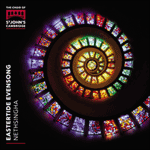 Eastertide Evensong
Eastertide Evensong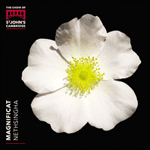 Magnificat, Vol. 1
Magnificat, Vol. 1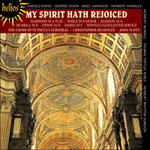 My spirit hath rejoiced
My spirit hath rejoiced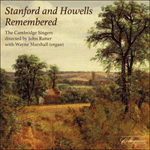 Stanford and Howells Remembered
Stanford and Howells Remembered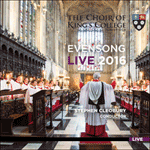 Evensong Live 2016
Evensong Live 2016
